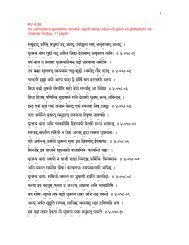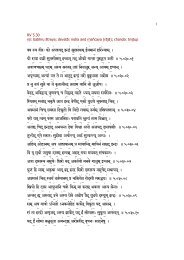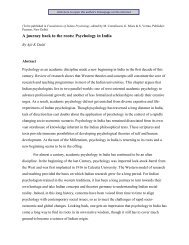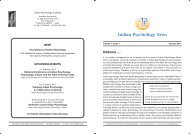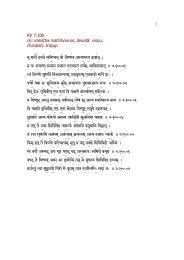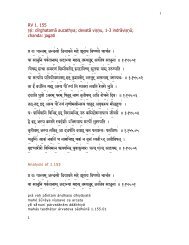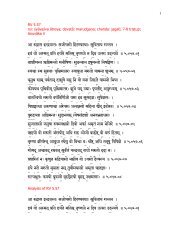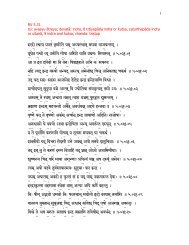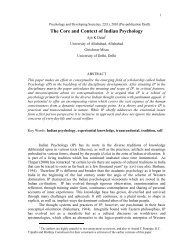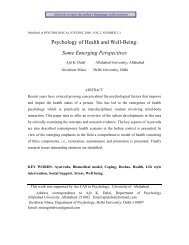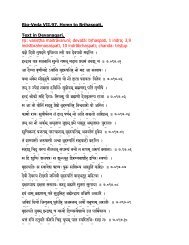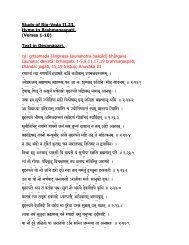Anasakti and health: A study of non-attachment - Indian Psychology ...
Anasakti and health: A study of non-attachment - Indian Psychology ...
Anasakti and health: A study of non-attachment - Indian Psychology ...
Create successful ePaper yourself
Turn your PDF publications into a flip-book with our unique Google optimized e-Paper software.
91<strong>Anasakti</strong> (the end state) has been explained in terms <strong>of</strong> anasaktaction or ’ni~kamakarma’ (which implies to achieve that end state).Anisakt action does not refer to physical abstention from activity.It is an intense, though disinterested action, performed with aspirit <strong>of</strong> dispassion, without nurturingconcerns about success orfailure, loss or gain, likes or dislikes. This results in a completeunification <strong>of</strong> the actor with the act <strong>and</strong> a consequent task excellence.According to the Bhagvad Gata, task excellence comesabout only when the . actor has understood that his concerns lieonly in actions <strong>and</strong> not in their results, that actions should notserve any personal motives <strong>and</strong> that these cognitions should notimply inaction. Being wedded to the piece <strong>of</strong> work at h<strong>and</strong> onlyimplies that while an individual is at work, he is not allowing hisabilities to run to waste in mental preoccupations <strong>and</strong> fears pertaining tothe results <strong>and</strong> consequences. Such an attitude towards work significantlyaffects the emotional response to success <strong>and</strong> failure.Following the relinquishment <strong>of</strong> desires, mental serenity is acquired<strong>and</strong> the individual maintains greater emotional equipoise in theface <strong>of</strong> consequence, be it good br bad, desirable or undesirable.In other words, by way <strong>of</strong> recominending commitment <strong>and</strong>total absorption in the task, the doctrine <strong>of</strong> anasakt action <strong>of</strong>fersan excellent way by which our worldly endeavours can becomemore effective.Although anasakti is extolled as an ideal by the <strong>Indian</strong> philosophical<strong>and</strong> mystical literature, yet it is manifested through commoncultural expressions such as popular songs, idioms, phrase <strong>and</strong>folklores. Depending upon the variety <strong>and</strong> breadth <strong>of</strong> their exposureto this ideal, people manifest anasakti in their day-to-day liveswithout perhaps being aware <strong>of</strong> its underlying metaphysical meaning.Since personality dispositions are partly conditioned by the dominantinputs contained in a given culture, anasakti is conceptualised as amultifaceted personality construct consisting <strong>of</strong> a set <strong>of</strong> beliefs,attitudes <strong>and</strong> cognitions consistent with the essence <strong>of</strong> the ideal.The causal linkage between anasakti <strong>and</strong> <strong>health</strong> can now beexplicated. It can be argued that the doctrine <strong>of</strong> anasakt actionconveys ,a message which is central to coping with life stressors.This argument is based on the psychological literature whichdemonstrates the significance <strong>of</strong> cognitive <strong>and</strong> attitudinalsystems in determining the manner in which stress inducingsituations are confronted (Pearlin, Liberman, Menaghan, &Mullan, 1981).Downloaded from pds.sagepub.com by Ajit Dalal on April 4, 2011



